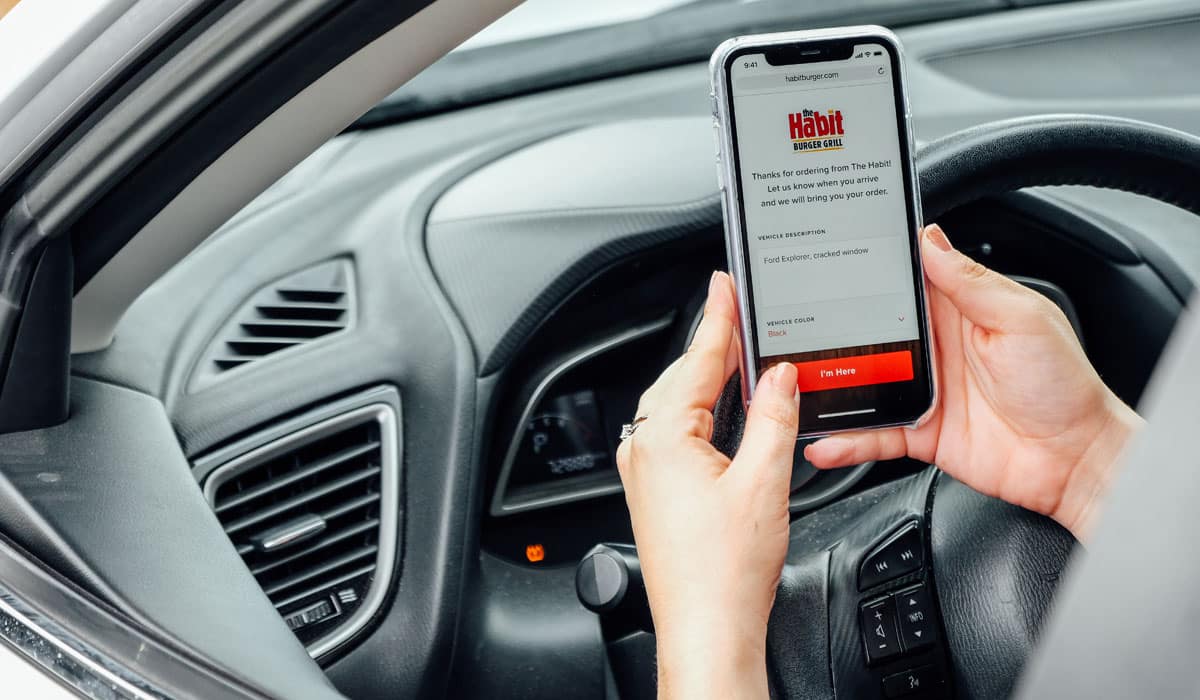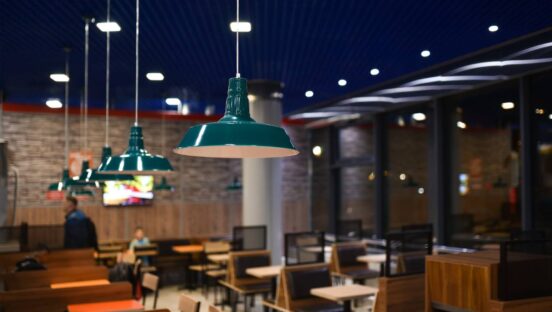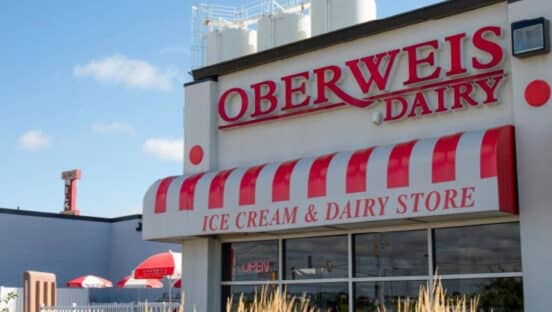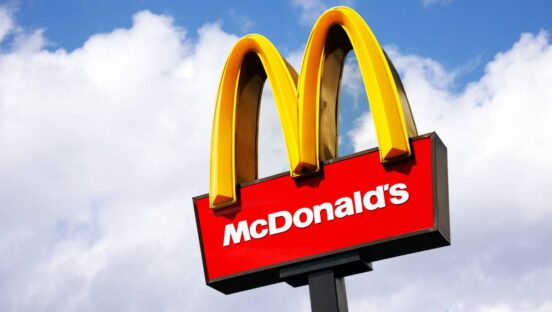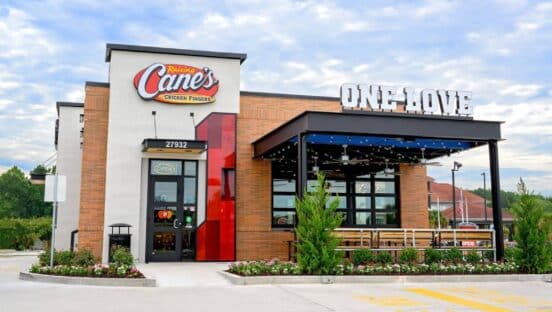Note: This is part three of a three-part series on the state of the restaurant industry in 2021. Read the first part, on the future of guest demand, here, and the second, on the rise off-premises, here.
While COVID-19 innovation has felt like it happened in a vacuum at times, it’s followed some age-old restaurant principles. Fogo de Chão CEO Barry McGowan views it this way: Before coronavirus, restaurants were growth-crazed. They let dartboard targets influence investments. The industry was saturated to the point of bursting, with many calling for a “course correction” in the imminent future, not unlike the one that crumbled retail a decade or so ago.
The sector was fast becoming a zero-sum game. For every restaurant that opened, it felt like another closed. Rising rents in retail malls and high-traffic trade areas, like urban markets, brought expansion-dominated brands to an inflection. They were strapped with expensive leases, declining guest counts, high costs (thanks largely to wage pressure), and the disruption of third-party delivery.
The potential result? A sector split between retail-focused and convenience, and those brands that stood for a particular product or category versus those that fell into the “lifestyle” ethos, or continued to try to be all things to all people.
COVID, however, forced restaurants to start listening again, McGowan says. And the end result is going to benefit guests, which opens opportunity for restaurants. “I think the guest is going to win, I really do,” he says. “And that’s a great thing for everybody in our industry.”
In Fogo de Chão’s case, this means—and has meant during the pandemic—leaning heavy into experiential service and delivering in-restaurant experiences people can’t recreate. For other brands, it’s naturally going to signal something else. But the key is defining purpose at this critical juncture—a period hopefully on the doorstep of life after COVID and a return to social occasions.
At the intersection of much of this conversation is technology. Roughly half of full-service, fast casual, and coffee and snack operators, said they devoted more resources to tech during COVID, including online or in-app ordering, mobile payment, and delivery management, according to the National Restaurant Association’s 2021 State of the Restaurant Industry Report.
Yet speaking to the broader workings of COVID, the Association pointed out something that’s glided under the surface of late. Technology itself hasn’t changed much since pre-virus days. Tech adoption rates have accelerated.
So what might have once been “nice to have” became “need to have,” and that’s really what shook up the landscape.
Operators implemented changes with an increasing focus on safety and convenience to keep from going under, the Association said.
Percentage of restaurant operators who say they devoted more resources to customer-facing technology since the beginning of the outbreak in March
- Family dining: 46 percent
- Casual dining: 50 percent
- Fine dining: 50 percent
- Quick service: 39 percent
- Fast casual: 48 percent
- Coffee and snack: 52 percent

Let’s examine some of the tech headliners of the past year, their prevalence, and the possibility they might have lasting power beyond the crowd avoidance dynamic of today’s restaurant consumer.
In an effort to enhance customer safety and reduce cost and waste associated with disposable menus, some operators turned to an old piece of technology that fell out of rotation—QR codes. Half of full-service operators reported adding digital menus, accessed by scanning a QR code, since March.
Still, only one in five customers said the option of bring up a menu on their phone through a QR code would make them more likely to choose one restaurant over another during the next few months. The Association suggests codes could be more expectation than influencer, when it comes to the dining out decision-making process.
Bartaco presents an interesting example. The 22-unit brand launched QR dining early in the pandemic through Olo, and ultimately with OneDine. But uniquely, the brand already had customers pick food and drinks off cards (like a sushi restaurant). So the idea of switching to phone ordering was relatively seamless since they were already used to doing so without a waiter. Making the QR switch, though, provided bartaco an opportunity to rethink labor and how it structures the front and back of the house (the cards remain, for those who don’t want to rely on their phone).
Essentially, it took a more hands-on-deck approach, pooled tips, and reset all employees to a minimum wage instead of a taxed tip wage. The result was employees started making between $23–$25 per hour across the board and bartaco shaved 5–6 percentage points off its labor pre-pandemic and ran 40 percent store-level EBITDA, despite being down 20–25 percent in sales, year-over-year. CEO Scott Lawton says brataco improved turnover, as well as the quality of cooks and other kitchen staff as the wage gap vanished throughout the restaurant.
Moving forward, could more restaurants take this approach as minimum wage barrels upward to $15? One thing to consider is the possibility of footprints with larger kitchens and smaller dining rooms, as you’re seeing in many restaurant of the future prototypes. That could support reimagined pay models and additional staffing dollars diverted to back-of-the-house workers, who now have everything from off-premises fulfillment to cooking other concepts’ food (ghost kitchen and virtual brands) on their plates. You might simply need more staff in the back than before.
Percentage of restaurant operators who added a QR code-accessible menu since the beginning of the outbreak in March
- Family dining: 48 percent
- Casual dining: 54 percent
- Fine dining: 50 percent
- Quick service: 21 percent
- Fast casual: 32 percent
- Coffee and snack: 13 percent
One of the stranger realities brought forth by COVID was contactless dining. Restaurants suddenly had to limit person-to-person contact as much as possible. Plexiglas barriers were thrown up. Seats and booths put into storage. Community tables turned into makeshift pickup shelves for takeout or aggregator orders.
Technology was the great enabler. Some 40 percent of operators across all six segments said they added a contactless or mobile payment option. It proved particularly valuable for off-premises dining, too. For those planning to order from a restaurant soon, 29 percent said they would choose a business that offered contactless or mobile payments over one that did not, the Association found.
Twenty-one percent of guests planning to dine-in said this option would factor into their restaurant choice.
Percentage of customers who say the availability of a contactless or mobile payment option would make them more likely to choose one restaurant over another during the next few weeks.
All customers
- Customers that plan to eat on-premises: 21 percent
- Customers that plan to order takeout/delivery: 29 percent
Gen Z
- Customers that plan to eat on-premises: 29 percent
- Customers that plan to order takeout/delivery: 45 percent
Millennials
- Customers that plan to eat on-premises: 24 percent
- Customers that plan to order takeout/delivery: 31 percent
Gen X
- Customers that plan to eat on-premises: 18 percent
- Customers that plan to order takeout/delivery: 27 percent
Baby Boomers
- Customers that plan to eat on-premises: 21 percent
- Customers that plan to order takeout/delivery: 28 percent
Remember when mobile apps were seen as a fading technology? Since the beginning of COVID, roughly one in four operators across all segments said they added tech to let customers order through mobile apps (not necessarily in-house ones).
One in five customers who plan to eat at a restaurant and one in four who plan to order food to-go said app-based ordering would influence their choice of one restaurant over another, with Gen Z leading the charge.
Basically, digital natives, of which there are many these days, will favor app-based ordering more often than not.
Percentage of customers who say the option of ordering and payment through a smartphone app would make them more likely to choose one restaurant over another during the next few months
All customers
- Customers that plan to eat on-premises: 20 percent
- Customers that plan to order takeout/delivery: 26 percent
Gen Z
- Customers that plan to eat on-premises: 37 percent
- Customers that plan to order takeout/delivery: 40 percent
Millennials
- Customers that plan to eat on-premises: 25 percent
- Customers that plan to order takeout/delivery: 30 percent
Gen X
- Customers that plan to eat on-premises: 15 percent
- Customers that plan to order takeout/delivery: 23 percent
Baby Boomers
- Customers that plan to eat on-premises: 15 percent
- Customers that plan to order takeout/delivery: 24 percent
Online ordering is becoming table stakes. Nearly half (48 percent) of consumers in the Association’s survey who plan to order takeout or delivery said the availability of online ordering would make them choose one restaurant over another. Gen X was the least likely to agree at 41 percent. Many restaurants, including more than half of fine-dining operators (who had further to go digitally), added the option in recent months.
Percentage of restaurant operators who say they added online ordering since the beginning of the outbreak in March
- Family dining: 41 percent
- Casual dining: 42 percent
- Fine dining: 51 percent
- Quick service: 31 percent
- Fast casual: 35 percent
- Coffee and snack: 45 percent
[image source_ID=”129110″]
Changes inside
As we’ve covered previously, there’s ample evidence pent-up demand is stirring for in-restaurant dining. It’s why McGowan and Fogo de Chão added menu items, like wagyu beef, and innovated the experience, not stripped it, in recent months. They’re preparing for a flood of customers hoping to get their lives back on track. And that will start by reconnecting with peers and family. Restaurants can play a role, as they always have.
Despite tech’s position in convenient, contactless ordering, so key in today’s environment, the Association pointed out, customers miss personal service. Given the choice of ordering from a server or ordering from their phone or a tablet at the table, most want the server. Only one in 10 customers said the option of ordering from a self-service kiosk would influence their choice of restaurant—self-service was not necessarily a huge influencer.
Here are some service topics to consider:
About one in five consumers planning to dine-in soon said they would pick one restaurant over another if they could choose their table from a seating chart without making a reservation. Gen Z were the most likely to show interest.
Percentage of on-premises customers who say the option of picking their exact table from a seating chart on a website when making a reservation would make them more likely to choose one restaurant over another during the next few months
- All adults: 19 percent
- Gen Z: 23 percent
- Gen X: 21 percent
- Millennials: 18 percent
- Baby Boomers: 19 percent
Many movie theaters started to head in this direction before COVID. The idea was simple. Erase one of the historic pain points, or friction in the guest experience. This notion you’d have to show up to a movie early to grab a seat. Or the stress of not being sure where you’d sit, or who you’d sit next to. Accelerate this into a COVID world and it becomes far more pressing. If people didn’t want to pack in with strangers before, they probably will consider than a deal-breaker now. It’s not just a preference debate today. It’s a personal safety one.
Up next is the server versus tablet dilemma. Given a choice, most consumers prefer table service when they’re dining in a restaurant, the Association said. Only one in five said the option of ordering and paying through a tablet or smartphone at the table would influence their restaurant choice. A combination of the two has potential, as Red Robin is banking on with its new service model, called TGX, or the Total Guest Experience. For example, the burger brand is deploying a “server partner” in tandem with waitstaff. Now, with handheld technology in tow, servers can spend more time roaming dining rooms and less on side tasks, like ringing up orders and delivering food. The server inputs orders at the table as they come in. CEO Paul Murphy said in January one result is “sever partners” getting drinks ready as the server makes their way around the table. So the drinks, in some instances, show up before the full group order is taken. This allows Red Robin to bring that second beer or glass of wine to the table, often before the meal. The sooner that first drink shows up, the better chance No. 2 will be ordered.
Among guests who plan to dine-in in a restaurant or fast-food venue in the next few months, 64 percent said they’d choose to sit in a section with traditional table service. This preference was strongest with older diners, with nearly 69 percent of Baby Boomers and 67 percent of Gen Xers saying they’d go for the section with traditional service.
Tech was more of a draw with Gen Z—55 percent said they would choose to order and pay electronically from their table.
Don’t pull hospitality out of the model if hospitality is what your customers always sought. Or at the least, have a plan to put it back in as COVID concerns fade.
How on-premises customers would prefer to be served at a table-service restaurant
Traditional table service, where a server takes the order and brings the bill at the end of the meal
- All on-premises customers: 64 percent
- Gen Z: 45 percent
- Millennials: 57 percent
- Gen X: 67 percent
- Baby Boomers: 69 percent
Customers order food and beverages and pay the bill using either a computer tablet at the table or an app on their smartphone
- All on-premises customers: 36 percent
- Gen Z: 55 percent
- Millennials: 43 percent
- Gen X: 33 percent
- Baby Boomers: 31 percent
Outdoor dining was one of the pandemic’s true lifelines. Sixty-two percent of fine-dining and 56 percent of casual-dining operators devoted more resources to developing and expanding outdoor dining areas during COVID, the Association found.
Seating areas went way past the patio. Municipalities around the country allowed restaurants to take over sidewalks, parts of streets, and even adjacent parking lots. More than four in 10 full-service operators took advantage, per the Association.
Of course, this all took a hit courtesy of Mother Nature. On average, 60.5 degrees is the lowest temperature diners said they’d tolerate to eat outside (Gen Z said 57.3 degrees and Boomers 63.4 degrees). Yet with some shelter, seven in 10 adults said they’d take a table outside in a temperature-controlled, ventilated tent, provided standard social-distancing measures were in place. Eighty-five percent of guests planning to dine on-premises in the coming months said they’d be willing to take those tables.
Percentage of restaurant operators who say they devoted more resources to developing or expanding outdoor dining areas since the beginning of the outbreak in March
- Family dining: 48 percent
- Casual dining: 56 percent
- Fine dining: 62 percent
- Quick service: 23 percent
- Fast casual: 37 percent
- Coffee and snack: 30 percent
On the other point …
Percentage of consumers who say they’d likely go to a restaurant and be seated outside in an enclosed and temperature-controlled ventilated tent, if social-distancing measures are in place
- All adults: 70 percent
- Gen Z: 74 percent
- Gen X: 69 percent
- Millennials: 76 percent
- Baby Boomers: 64 percent
- All on-premises customers: 85 percent
[image source_ID=”127733″]
A consideration for marketing
How do you reach customers you can’t see? That was a banner point for restaurant marketers during the crisis. Thankfully, it wasn’t exactly new. The shift to digital, loyalty, and other data-driven channels surged ahead of the crisis. But COVID spun the wheel, as it tended to do.
Particularly effective were those initiatives that rewarded customers with discounts for brand loyalty. A newer approach, meal subscription programs, emerged as well, the Association said.
Loyalty programs were always popular for restaurants, especially when it came to driving traffic and encouraging repeat visits. That only gained in 2020. Roughly one in three on- and off-premises customers said the availability of a customer loyalty and rewards program would make them more likely to choose one restaurant over another during the next few months.
Percentage of restaurant operators who say they added a loyalty or frequent customer program since the beginning of the outbreak in March
- Family dining: 10 percent
- Casual dining: 9 percent
- Fine dining: 7 percent
- Quick service: 12 percent
- Fast casual: 7 percent
- Coffee and snack: 12 percent
Percentage of customers who say the availability of a customer loyalty and rewards program would make them more likely to choose one restaurant over another during the next few months
All customers
- Customers that plan to eat on-premises: 34 percent
- Customers that plan to order takeout/delivery: 36 percent
Gen X
- Customers that plan to eat on-premises: 29 percent
- Customers that plan to order takeout/delivery: 35 percent
Millennials
- Customers that plan to eat on-premises: 31 percent
- Customers that plan to order takeout/delivery: 35 percent
Gen X
- Customers that plan to eat on-premises: 38 percent
- Customers that plan to order takeout/delivery: 35 percent
Baby Boomers
- Customers that plan to eat on-premises: 39 percent
- Customers that plan to order takeout/delivery: 39 percent
And what about value? Nobody is quite certain what the spending environment is going to look like on the backside of COVID. But it’s likely price will matter more to some households than it did previously. Maybe even more than ever.
Four in 20 customers planning to dine out soon said they would choose a restaurant that offered discounted dining during the less busy days of the week over ones that didn’t, the Association found.
Three in 10 on-premises guests would be more likely to choose a restaurant that offers discounts for dining at off-peak times of the day or that had an option to order smaller portions for a lower price.
The same value propositions influence takeout and delivery choices for off-premises customers, too.
Value propositions that would make on-premises and off-premises customers more likely to choose one restaurant over another during the next few months.
Discounts for dining on less buys days of the week
- All on-premises customers: 39 percent
- Gen Z: 39 percent
- Millennials: 40 percent
- Gen X: 39 percent
- Baby Boomers: 43 percent
Discounts for dining at off-peak times of the day
- All on-premises customers: 32 percent
- Gen Z: 29 percent
- Millennials: 26 percent
- Gen X: 33 percent
- Baby Boomers: 37 percent
Option of smaller-sized portions for a lower price
- All on-premises customers: 29 percent
- Gen Z: 25 percent
- Millennials: 23 percent
- Gen X: 28 percent
- Baby Boomers: 37 percent
Discounts for ordering on less busy days of the week
- All off-premises customers: 35 percent
- Gen Z: 54 percent
- Millennials: 34 percent
- Gen X: 30 percent
- Baby Boomers: 35 percent
Discounts for ordering at off-peak times of the day
- All off-premises customers: 34 percent
- Gen Z: 34 percent
- Millennials: 35 percent
- Gen X: 33 percent
- Baby Boomers: 35 percent
Option of smaller-sized portions for a lower price
- All off-premises customers: 25 percent
- Gen Z: 33 percent
- Millennials: 23 percent
- Gen X: 21 percent
- Baby Boomers: 29 percent
A last look ahead
We’ve come far enough with COVID to truly start asking what changes will stick and which will not. Most operators across all six segments in the Association’s study said they plan to keep at least some of the changes. Fewer than 5 percent said they wouldn’t keep any.
And although many of the changes made improved efficiency and productivity, those benefits didn’t result in more profit this year. Many said their restaurant’s profit margin is lower than it was prior to the pandemic. In all, the industry faces a lot of recovery ahead and savvy operators will figure out how to take the most effective lessons they learned this year to speed that process, the Association said.
Percentage of restaurant operators who say their operation has become more efficient and productive since the beginning of the outbreak in March
- Family dining: 52 percent
- Casual dining: 57 percent
- Fine dining: 60 percent
- Quick service: 63 percent
- Fast casual 58 percent
- Coffee and snack: 49 percent
Percentage of operators likely to keep changes made to their restaurant after COVID-19 has subsided
Family dining
- Keep all of the changes: 26 percent
- Keep some of the changes: 71 percent
- Keep none of the changes: 3 percent
Casual dining
- Keep all of the changes: 23 percent
- Keep some of the changes: 74 percent
- Keep none of the changes: 3 percent
Fine dining
- Keep all of the changes: 22 percent
- Keep some of the changes: 76 percent
- Keep none of the changes: 2 percent
Quick service
- Keep all of the changes: 28 percent
- Keep some of the changes: 68 percent
- Keep none of the changes: 4 percent
Fast casual
- Keep all of the changes: 28 percent
- Keep some of the changes: 68 percent
- Keep none of the changes: 4 percent
Coffee and snack
- Keep all of the changes: 27 percent
- Keep some of the changes: 69 percent
- Keep none of the changes: 4 percent
Restaurant operators reporting of their profit margin compared to pre-COVID-19 levels
Family dining
- Higher profit margin: 3 percent
- Lower profit margin: 91 percent
- About the same: 5 percent
Casual dining
- Higher profit margin: 4 percent
- Lower profit margin: 90 percent
- About the same: 7 percent
Fine dining
- Higher profit margin: 3 percent
- Lower profit margin: 90 percent
- About the same: 7 percent
Quick service
- Higher profit margin: 15 percent
- Lower profit margin: 71 percent
- About the same: 14 percent
Fast casual
- Higher profit margin: 4 percent
- Lower profit margin: 86 percent
- About the same: 10 percent
Coffee and snack
- Higher profit margin: 4 percent
- Lower profit margin: 87 percent
- About the same: 9 percent

